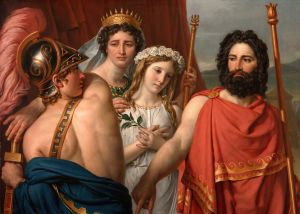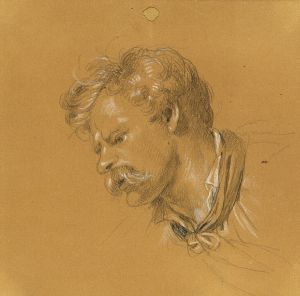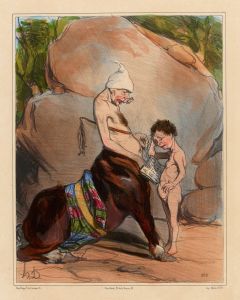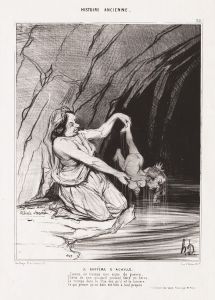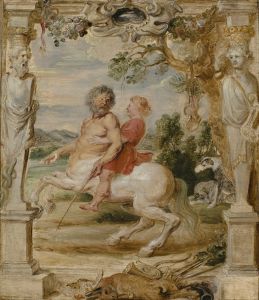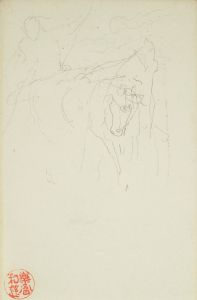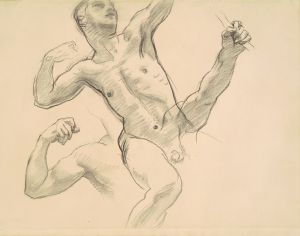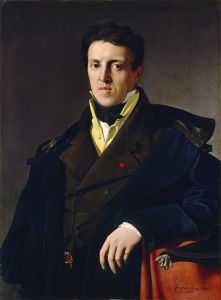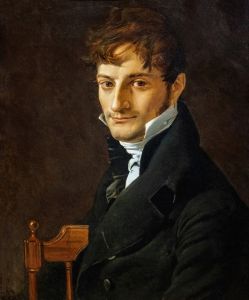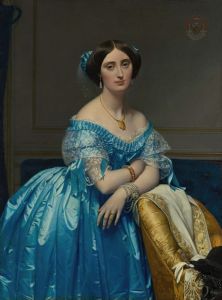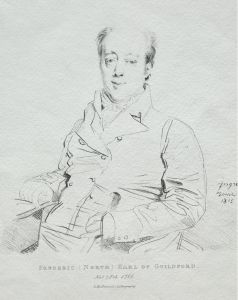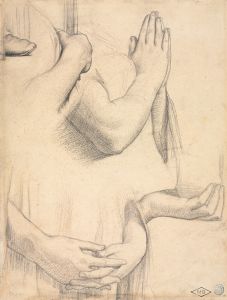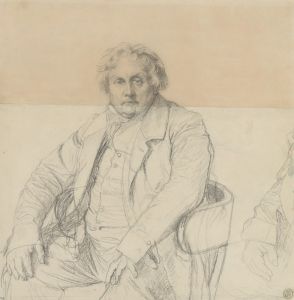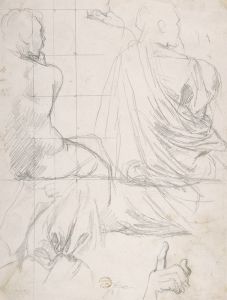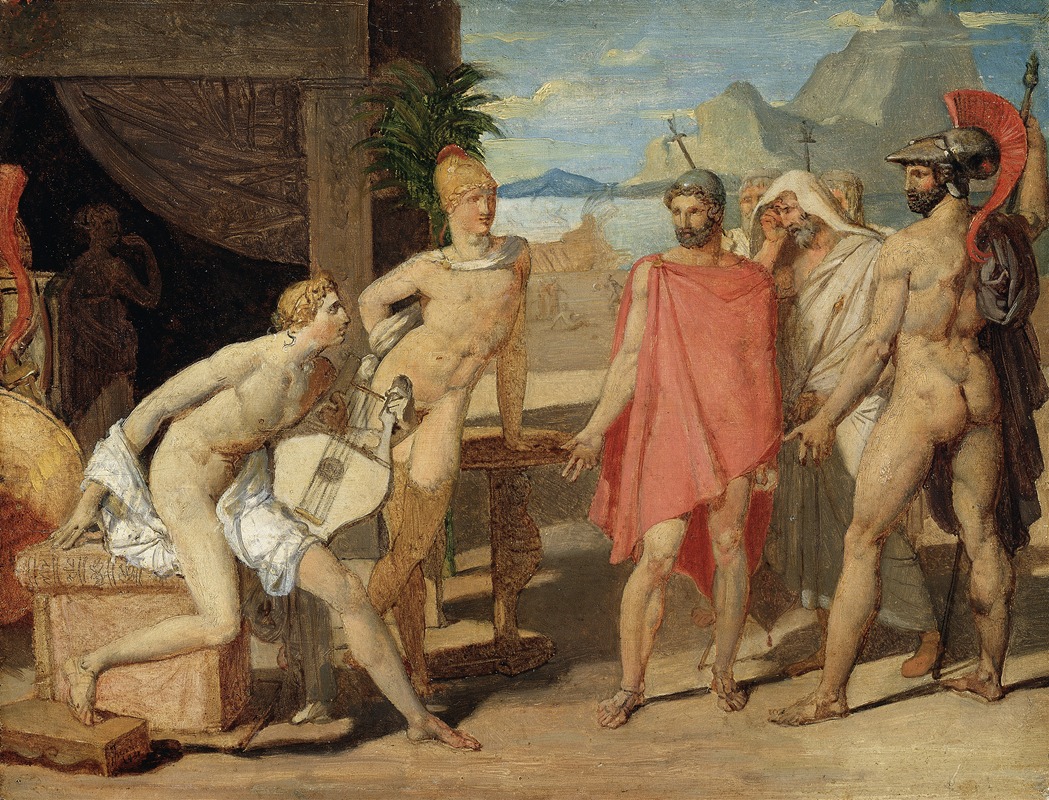
Achilles Receiving in his Tent the Envoys of Agamemnon
A hand-painted replica of Jean Auguste Dominique Ingres’s masterpiece Achilles Receiving in his Tent the Envoys of Agamemnon, meticulously crafted by professional artists to capture the true essence of the original. Each piece is created with museum-quality canvas and rare mineral pigments, carefully painted by experienced artists with delicate brushstrokes and rich, layered colors to perfectly recreate the texture of the original artwork. Unlike machine-printed reproductions, this hand-painted version brings the painting to life, infused with the artist’s emotions and skill in every stroke. Whether for personal collection or home decoration, it instantly elevates the artistic atmosphere of any space.
"Achilles Receiving in his Tent the Envoys of Agamemnon" is a painting by the French Neoclassical artist Jean Auguste Dominique Ingres. Completed in 1801, this work was created as Ingres' submission for the prestigious Prix de Rome, an award that allowed young French artists to study in Rome. Ingres won the prize with this painting, which marked an important milestone in his early career.
The painting depicts a scene from Homer's epic poem, the "Iliad." It illustrates the moment when the Greek hero Achilles receives envoys sent by Agamemnon, the leader of the Greek forces during the Trojan War. The envoys, including Odysseus, Phoenix, and Ajax, are sent to persuade Achilles to return to the battlefield after he withdraws in anger due to a dispute with Agamemnon over the war prize, Briseis.
Ingres' composition is notable for its adherence to Neoclassical principles, emphasizing clarity, order, and the idealized portrayal of the human figure. The painting is characterized by its precise lines, balanced composition, and the use of classical drapery and architecture to evoke the ancient world. The figures are arranged in a frieze-like manner, reminiscent of classical reliefs, and the expressions and gestures of the characters convey the gravity of the moment.
Achilles is depicted seated in his tent, exuding a sense of calm authority and strength. His posture and the positioning of his spear suggest his readiness for action, despite his current state of withdrawal. The envoys, on the other hand, are shown in various states of supplication and persuasion, reflecting their mission to convince Achilles to rejoin the fight against the Trojans.
The painting also reflects Ingres' early mastery of anatomy and his ability to convey complex emotions through facial expressions and body language. The use of light and shadow enhances the three-dimensionality of the figures and adds to the dramatic tension of the scene.
"Achilles Receiving in his Tent the Envoys of Agamemnon" is housed in the École des Beaux-Arts in Paris, where it continues to be studied and admired for its technical excellence and its embodiment of Neoclassical ideals. This work not only secured Ingres' place as a prominent artist of his time but also set the stage for his future contributions to the art world, where he would become known for his portraits and historical paintings.
In summary, Jean Auguste Dominique Ingres' "Achilles Receiving in his Tent the Envoys of Agamemnon" is a significant work that exemplifies the Neoclassical style and showcases the artist's skill in composition, anatomy, and emotional expression. It remains an important piece in the study of early 19th-century French art.





